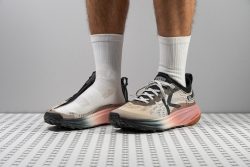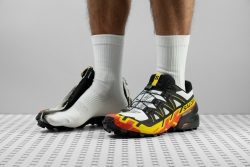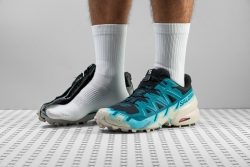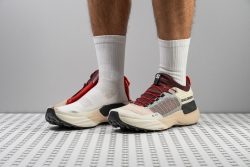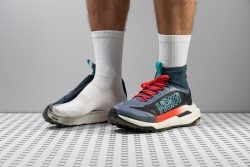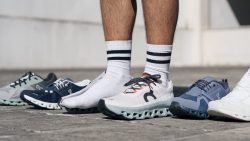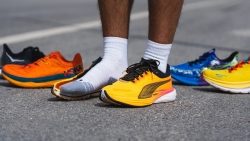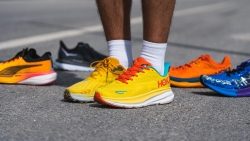7 Best Mud Running Shoes in 2025

We buy shoes ourselves. We earn commissions when you buy through us, at no extra cost. Why trust us
Tackling muddy trails means your running shoes should have sticky outsole rubber, superb lockdown, and very deep lugs that are placed further apart.. with so many things going on; we want to make this easy for you.
We went into great detail explaining mud running shoes, the necessary features, how to recognise them, and which shoes to definitely avoid when running over muddy trails
But we also chose the best picks out of all the mud shoes we tested on our runs and in our lab. Here, we highlight those shoes and explain why they got to be at the top of the list!
How we test mud running shoes
How do we know which trail shoes will keep you surefooted when it gets muddy? Through an extensive review process and our shoe lab:
- First of all, every tested shoe is purchased with our own funds. We receive no free shoes from brands.
- We are dedicated runners who take each pair to rough tests on wet trails multiple times.
- Next to the things that are a priority in mud shoes, like lug depth and outsole hardness, we measure and assess 20+ more parameters in our lab. This is where we translate “breathability,” “durability,” and “flexibility” into comparable data.
- We also cut the shoes in half and then into pieces to look at what's inside and analyse all the technologies and layers.
Running shoes for mud with the best durability















































What makes it the best?
From its heavy-duty construction to the reliable lugs that provide confidence-inspiring traction over sloshy trails, the KEEN Seek is our most durable mud running shoe. It proves to be an armour in and out of the lab, without losing the fluidity needed to adapt to various terrains.
Starting from the top, the shoe includes an “abrasion-resistant” knit upper, and it held up well in our Dremel test, resulting in a high 4/5 toebox durability score. Surprisingly, it doesn’t lose ventilation and earns a remarkable 4/5 in breathability.
The shoe’s 4.2 mm lugs are a mud runner’s dream. With butterfly-shaped and trapezoid lugs, we found them grippy enough for conquering technical terrain. On top of that, the outsole served as our shield underfoot; it had only a tiny 0.6 mm dent in our abrasion test compared to the 0.9 mm average, cementing its longevity.
Despite its sturdy build, its midsole retains flexibility. In our bend test, it emerged 22.6% more malleable than average, boosting its comfort and versatility even for hiking.
We recommend runners who prioritise speed and agility to look elsewhere. With its tank-like build, the shoe weighs a heavy 10.8 oz (305g), 5.5% above average.
Pros
- High shock absorption
- Remarkable overall durability
- High-quality knit upper
- Super-comfy sock-like tongue
- Advanced outsole design
- Works well for hiking too
- Handles well cold temperatures
- Flexible despite high-stack build
Cons
- Price may be high for some
- Heavier than competitors
- Not ideal for narrow-footed individuals
- Limited heel stability
Best running shoes for mud overall
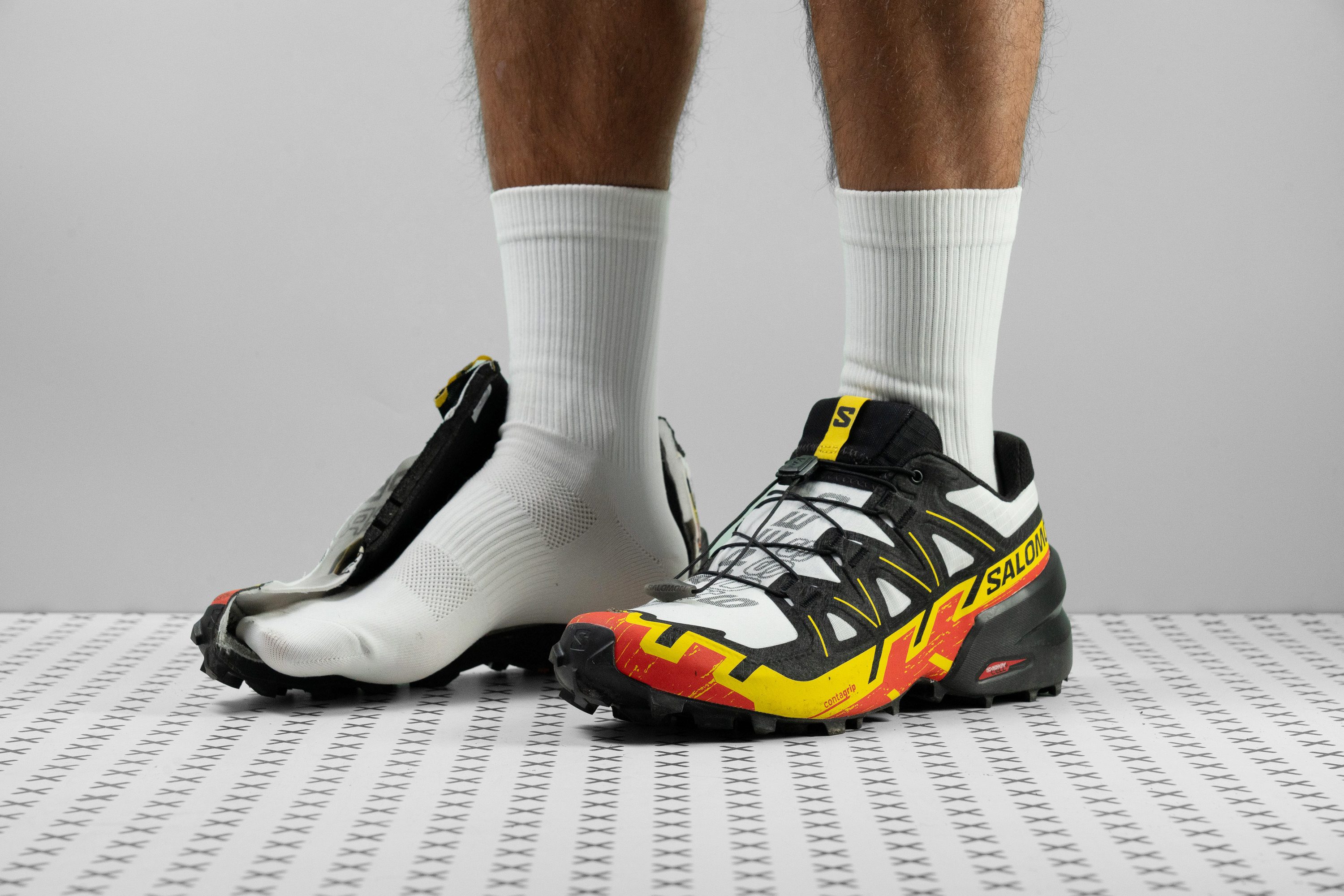



















































What makes it the best?
We conquered muddy tracks with confidence in the Salomon Speedcross 6. With a seamless combination of reliable traction and a compromising midsole, all in a highly stable platform, we felt like we could run all day on any pavement with this pair. In the lab, this shoe proves its versatility and emerges as our top mud running shoe.
The key to ensuring safety on soft ground is having deep, sticky rubber lugs. Speedcross 6 goes beyond the 3.5 mm average with lugs measuring 5.8 mm deep. This didn’t go unnoticed in our runs since the outsole bit through slippery trails and mud, effectively preventing mishaps. They are spaced generously to give room for mud-shedding.
Helping us lift our feet off the soil easily is the shoe’s resilient midsole, which easily adapts to our natural strides on uneven terrains. We stayed in control since the shoe didn’t resist us, confirmed by our bend test with a flexibility score 12.4% above average.
But when it comes to twisting our ankles or excessive lateral motions, the shoe has no give. The curved insole effectively contains our feet inside the shoe, creating a highly stable ride. Moreover, we proved its opposition to twisting with its high 4/5 torsional rigidity score.
With zero ventilation, we can only recommend this pair in cold weather. Runners who sweat and overheat a lot should find more breathable shoes.
Pros
- Ideal for heel strikers
- Impressive durability
- Quick mud shedding ability
- Lightest Speedcross yet
- Secure lockdown with QuickLace system
- Enhanced ground feel in the forefoot
- Agile and responsive in fast corners
- Agile and responsive in fast corners
Cons
- Midsole feels like concrete
- Extremely poor breathability
- Not suitable for midfoot and forefoot strikers
- Low energy return
Running shoes for mud with the best stability
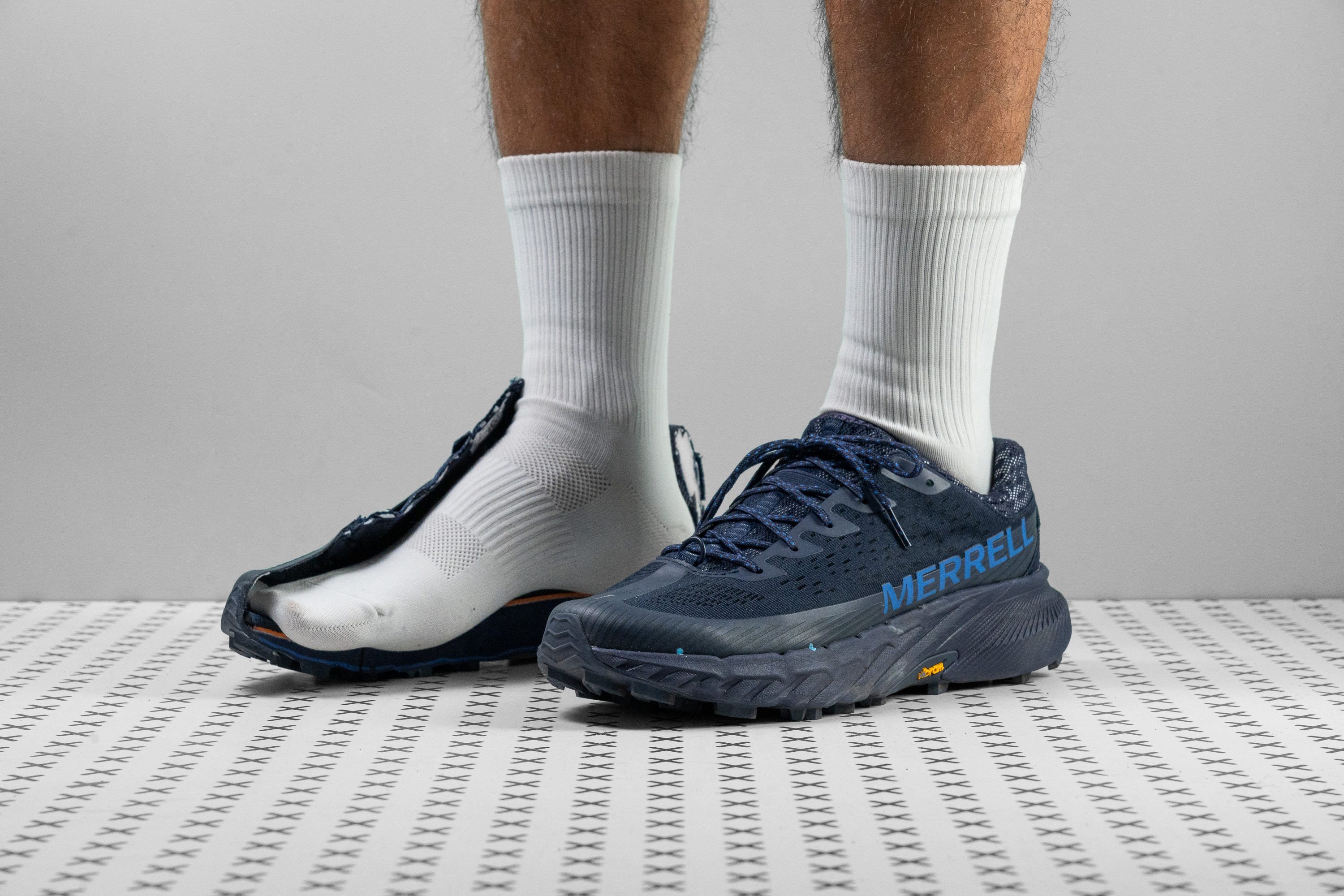















































What makes it the best?
Our adventures with the 5th Merrell Agility Peak truly felt delightful as gruelling miles rolled by without us counting. Its soft and substantial stack offers immense comfort and exceptional muscle protection, its first-class Vibram outsole delivers unwavering traction, and its rigid structure enhances controlled footing. Through rigorous testing in the lab, this trail shoe cements its position as the ultimate stability mud running shoe.
Agility Peak 5 offers surefootedness through its broad 93.0 mm heel and strong lockdown. It firmly resists twisting, proven by its 5/5 torsional rigidity score. Moreover, the heel counter feels secure, proven by its 4/5 stiffness rating.
Underneath is the stellar Vibram Megagrip outsole, which we believe is the best rubber for trail running based on our lab tests. It further reinforces its tailored for technical terrain with its 4.5-mm deep and sticky lugs, widely spaced to shed off mud. It displays unquestionable traction in puddles and proves it’s built to last, as it performs better than average in our brutal Dremel test.
Our heels are caught by a plush and generous 39.2 mm stack, scoring impressively high at 125 SA in our shock absorption test. We also found a rock plate covering the midfoot to forefoot, providing additional protection and stability.
Unfortunately, the steep 13.4 mm drop may feel uncomfortable for mid-to-forefoot strikers. Agility Peak 5’s construction is more beneficial for rear strikers.
Pros
- Easily handles tough trails
- Performs well on both downhills and uphills
- Extremely durable upper with numerous TPU reinforcements
- Suitable for year-round use
- Loads of recycled, eco-friendly stuff
- Wonderful for heel strikers
- Excellent all-terrain shoe
- Excellent all-terrain shoe
- Excellent all-terrain shoe
Cons
- Grips worse than expected
- Actual drop deviates significantly from what's stated
- Feels flat underfoot
- Narrow toebox
Best waterproof running shoes for mud

















































What makes it the best?
Our quest for the ultimate waterproof mud running shoe concluded with the discovery of the Salomon Speedcross 6 GTX. Lab results confirm our verdict: it fulfils the adventurer’s needs with unmatched grip, complete protection from moisture and cold, and a secure ride.
Starting from the top, our microscope reveals a tightly knitted upper with a full Gore-Tex membrane. Even as we traversed through wet mud, our feet remained warm and dry. In our smoke test, it trapped the air inside and received a 1/5 breathability rating, confirming its protective nature.
In the midsole, we find a firm cushion with exceptional torsional rigidity, enhancing stability. Our durometer confirms the foam is 23.7% harder than average, preventing bottoming out. On uneven paths and inclines, we felt remarkably surefooted, with minimal risk of rolling our ankles. Its rigidity was evident in our manual twist assessment, earning a perfect 5/5 score.
Speedcross boasted unquestionable grip even on the softest and most slippery grounds we tested. The outsole is lined with 5.0 mm chevron-shaped lugs, 1.4 mm deeper than average, and serves as our brakes on steep descents. What’s even more impressive is its ability to shed mud effectively due to its spacing.
Unfortunately, the shoe weighs a heavy 11.5 oz (325g). Those who prefer a lighter option should explore further.
Pros
- Fully functional Gore-Tex membrane
- Ample cushioning for long adventures
- Excels in challenging, technical terrain
- Rapidly sheds mud
- Agile and tenacious grip on twisted trails
- Remarkable durability
- Ideal for heel strikers
Cons
- Completely lacks breathability
- Midsole could feel overly firm for some
- Exceptionally heavy
- Narrow, snug-fitting toebox
Best lightweight running shoes for mud
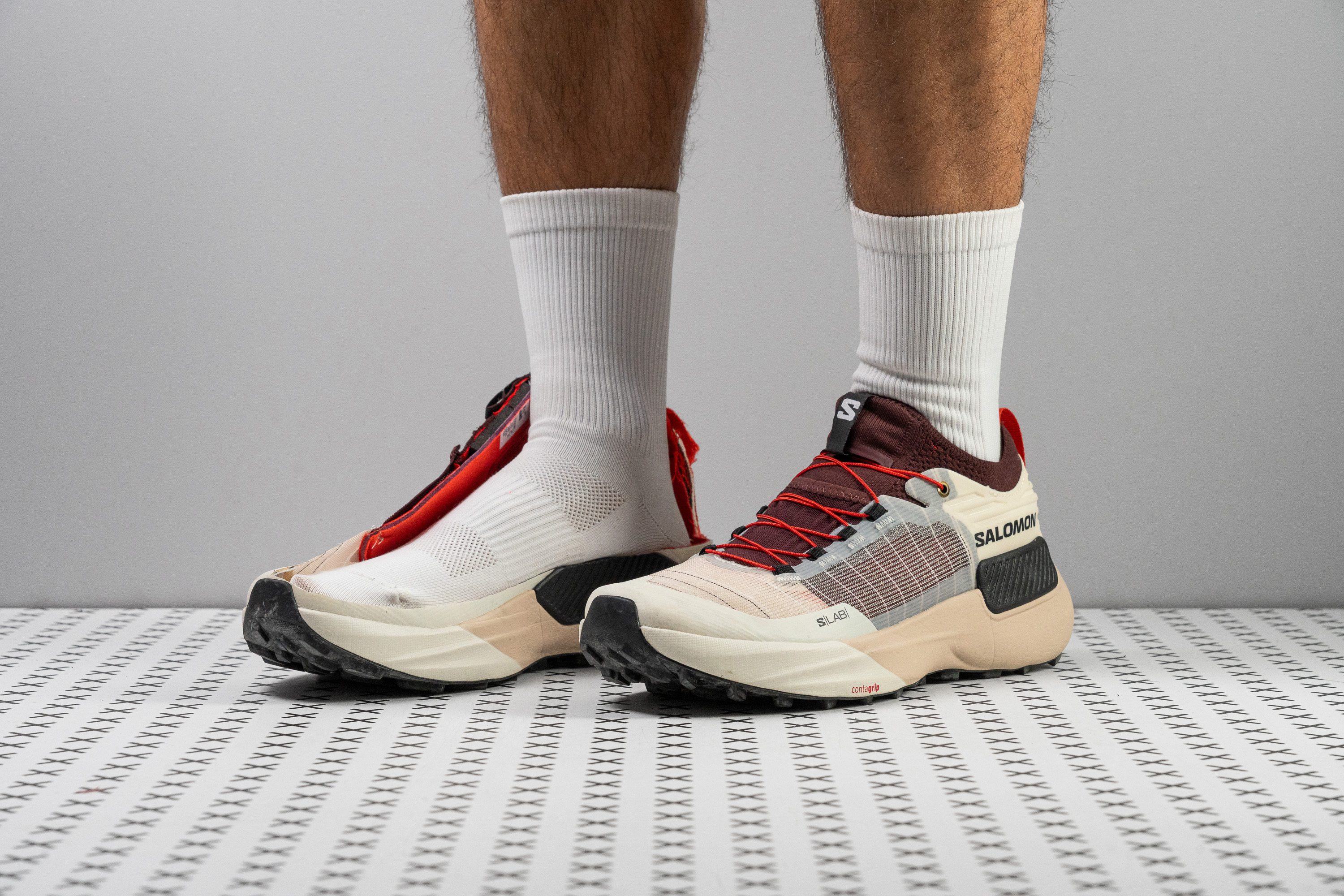
















































What makes it the best?
We effortlessly navigated through the mud with Salomon’s S/Lab Genesis. Our lab tests confirm it's the top lightweight mud shoe, capable of going fast and far with its agile build, adaptable midsole, and deep, adhesive lugs. Its array of features ensures control across diverse terrains.
Its airy build enhances our speed. At 8.8 oz (249g), it exhibits unmatched lightness, making it quicker to move than carrying the average trail shoe, which weighs 10.2 oz (289g).
S/Lab Genesis features a free-flowing midsole that keeps us nimble on sticky ground. It’s easy to manoeuvre, with our bend test verifying it’s 4.8% more flexible than average. This means it needs less effort to bend the shoe as we stride. Even twisting our feet feels effortless as our manual assessment reveals a 3/5 torsional rigidity.
Its Contagrip rubber outsole has stable traction, inspiring surefootedness in our runs. Lined with 4.5 mm lugs that bite the ground, we didn't slip on puddles. The lugs are angled in different directions and are well-spaced in the midfoot for mud shedding.
However, we felt frustrated finding out that it features an EVA foam with limited responsiveness. Runners seeking a high-performance shoe should try elsewhere.
Pros
- Exceptionally lightweight
- Premium MATRYX upper
- Excellent lockdown
- Plush, well-padded tongue
- Quick and efficient Quicklace lacing system
- Works for running and hiking
- Versatile Contagrip outsole with rock plate
- Unique aesthetics
- Feels great on fast downhills
Cons
- EVA-based midsole lacks bounce
- Expensive for the technology provided
- Upper durability could be improved
- Low shock absorption
Running shoes for mud with the best shock absorption
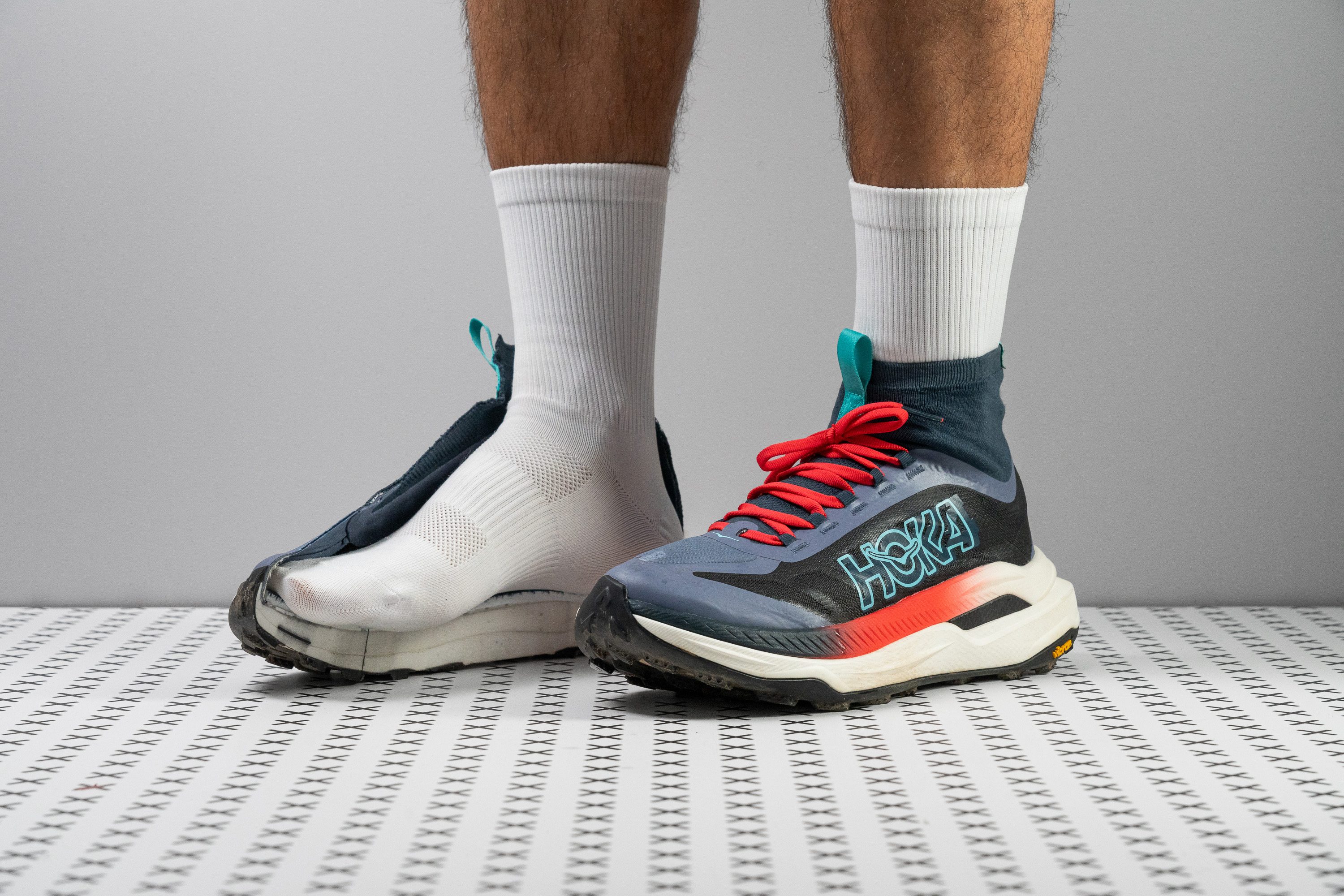


















































What makes it the best?
On every run, the HOKA Tecton X 3 surrounds us in luxurious comfort. It delivers a solid amount of bounce, combined with a fatigue-reducing midsole and a reliable outsole that allows us to stay agile on muddy tracks. Our lab results wholeheartedly agree—this shoe wins in shock absorption among mud running shoes.
Its very thick 37.8/30.9 mm slab of foam in the heel and forefoot rises 5.2/5.9 mm above the average trail shoe. Our shock absorption test shows it's one of the most protective trail shoes we’ve tested at 139 SA, with 13.9% better impact protection than average. This combination makes it highly cushioned, protecting our legs from feeling beaten up. The platform feels surprisingly stable with its wide base.
We had no dull moments in this shoe, with the midsole springing us forward with every stride. Testing for energy return, we recorded high scores of 69.9% in the heel and 70.2% in the forefoot.
Its Vibram outsole and chunky lugs help us cruise through tracks by providing good grip on soft dirt and moderate trails. Featuring the Traction Lug technology, they measure 4.0 mm deep and are chevron-shaped, making them more capable of biting into mud.
With its mega-stack giving us less ground feel, Tecton X 3 isn’t ideal for runners who prefer a stronger surface connection.
Pros
- A true supershoe for trails
- Ultra-grippy and durable Vibram outsole
- Fantastic energy return from PEBA foam
- Versatile for both long runs and ultra races
- Stability improvements
- Shields from debris effectively
- Premium MATRYX upper
- Designed to dominate ultra-distance events
- Secure fit
Cons
- Sky-high price tag
- Heavier than the Tecton X 2
- Absolutely not for wide feet
- New ankle gaiter may not work for everyone
Best zero drop running shoes for mud






















































What makes it the best?
Armed with a low profile, a roomy fit, and a grippy outsole, the Altra Lone Peak 9 kept us agile and secure through our muddy encounters. Our lab results support it’s the best zero-drop shoe in the mud running category with its enhanced ground sensitivity and grippy base that allows us to adapt to various terrains.
Immediately, we felt LP9’s low and levelled platform. This gave us a lot of control as we navigated tricky and uneven slopes. Our calliper reveals its grounded 23.3/23.3 mm stack, ultimately leading to a very evident zero drop.
We had generous room for natural toe-splaying, allowing us to run confidently and comfortably. Using our gel mould, it’s already clear how non-tapered the toebox is. Our calliper further confirms it’s a massive 85.3 mm in the big toe area vs. the 74.8 mm average.
Note that we tested the Lone Peak 9+ version’s outsole and it features the highly reliable and grippy Vibram Megagrip outsole. It clings excellently on various surfaces with the help of its arrow-shaped 3.8 mm lugs, keeping our strides smooth and controlled. They supported us as we traversed muddy tracks and wet rocks with a pattern that served as our brakes on steep slopes.
Unfortunately, at 10.9 oz (309g), the shoe is too heavy for its size. Those who prefer a more natural and weightless ride should try other options.
Pros
- True zero-drop geometry
- Extra-roomy, foot-shaped toebox
- Vibram option finally available
- Improved forefoot stability
- Flat-profile, natural ride
- Secure lacing system
- Still a low-stack shoe!
- Standard and wide versions
- Good durability
Cons
- Feels really heavy for its size
- Stiffer than previous versions
- Lacks airflow
- Having two outsole versions adds confusion
2 must-haves in mud running shoes
First, it’s the good grip. No, not good, superb! Second, depending on the terrain and weather conditions, you should choose either a very breathable and quick-drying shoe or a shoe with a waterproof membrane. We help you decide which one you need below.
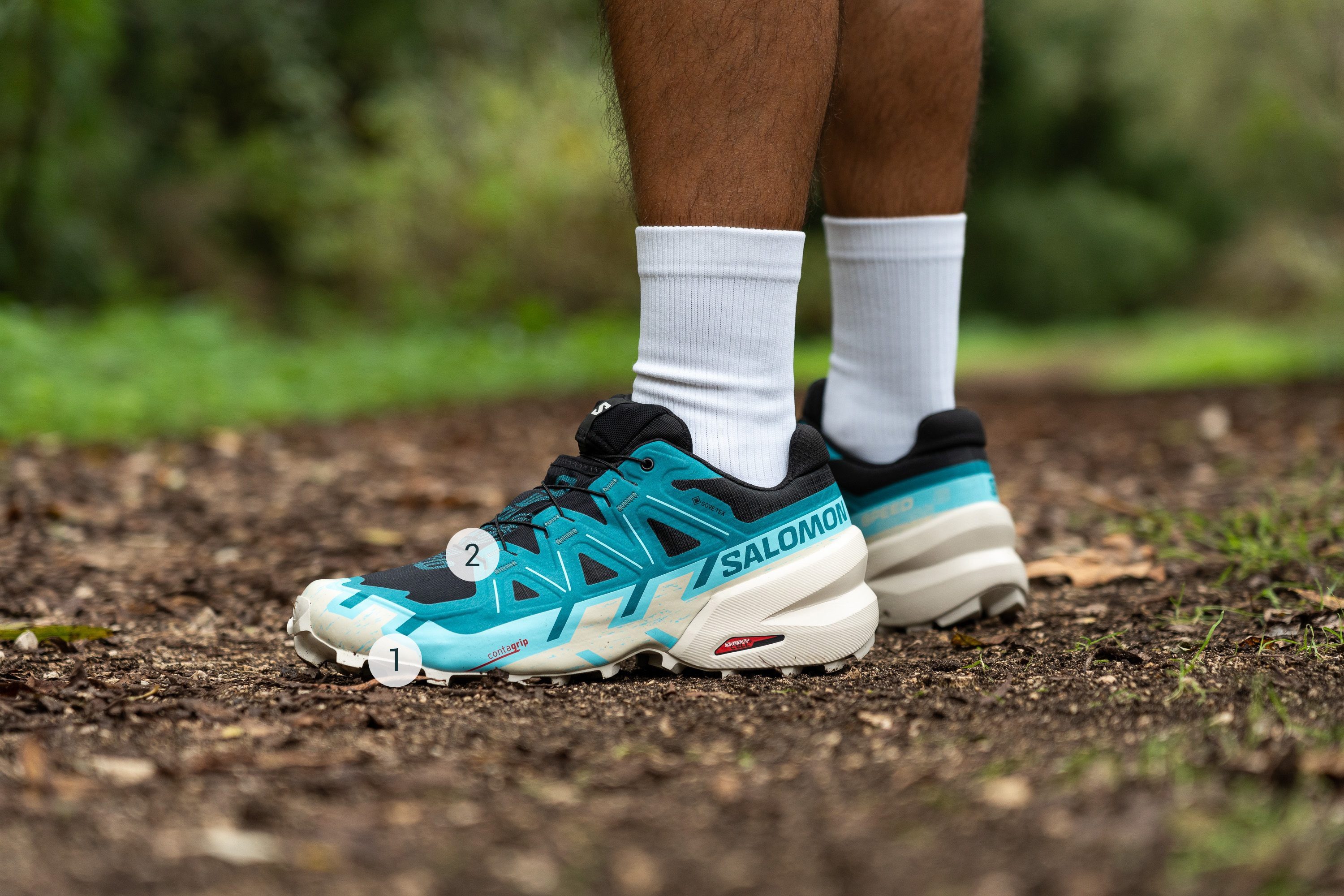
Outsoles and lugs that won’t get you stuck in mud
In the world of mud running shoes, having a superb grip means deep lugs (minimum 4mm) that are spaced further apart. This means there are not many lugs but those that exist are deep and aggressive. They are often multidirectional to be able to grip both on uphill and downhill trails.
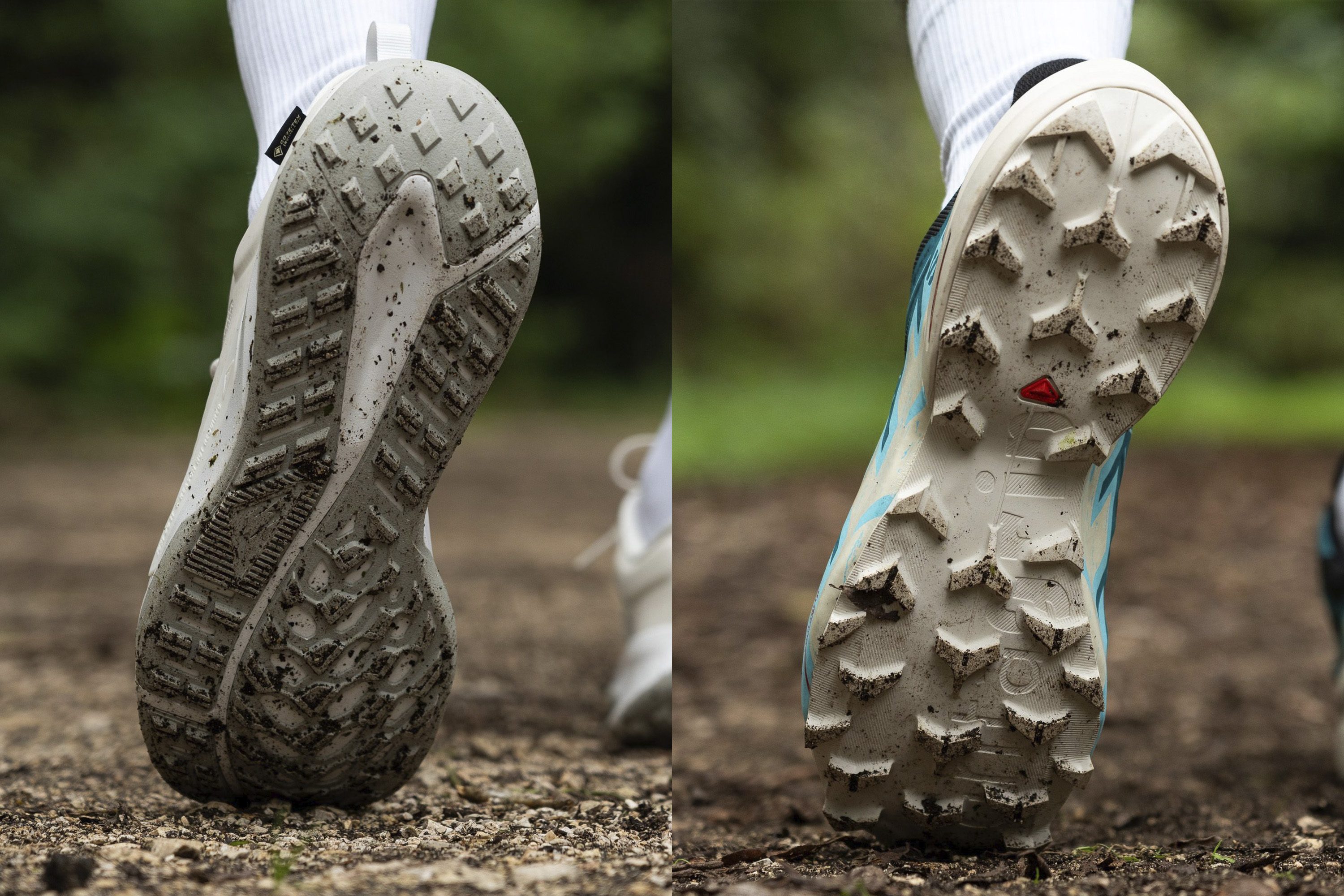
Outsoles with many lugs placed close together can surely be very grippy, but the distance between the lugs helps with mud-shedding.
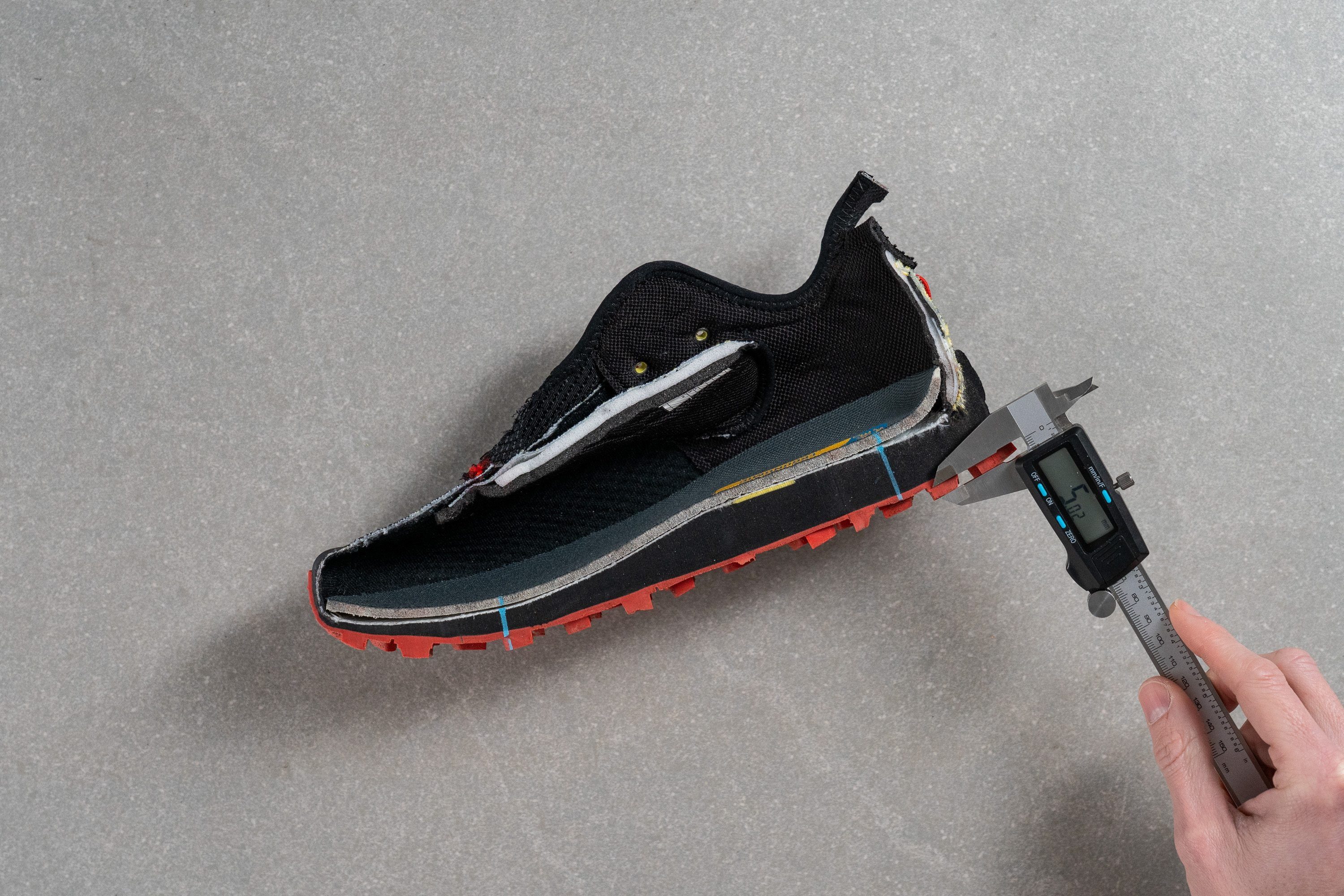
In our shoe lab, we use a digital calliper to measure the thickness of the lugs. We consider lugs that are at least 4mm thick, very deep and great for mud.
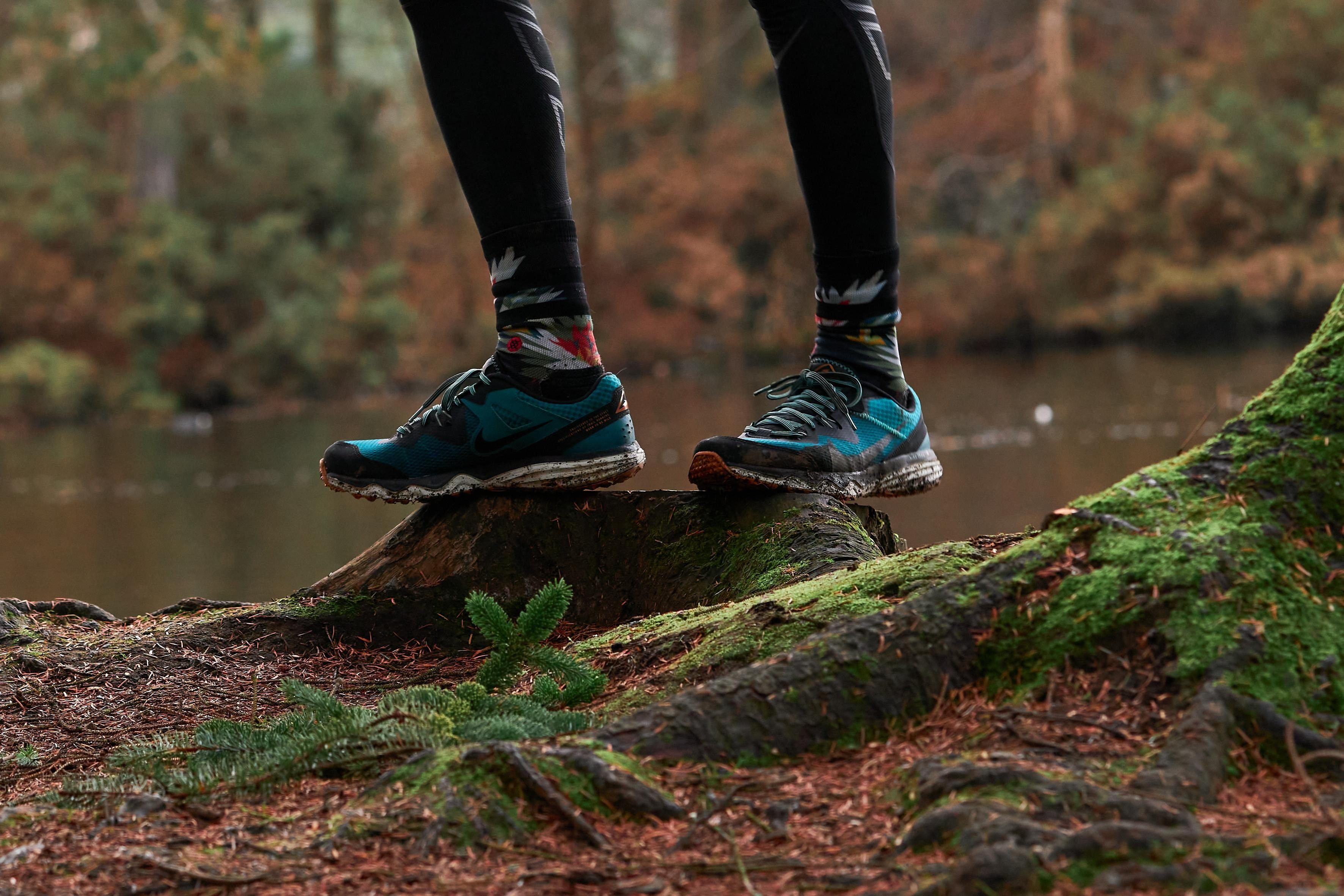
Of course, this does not mean that some shoes with 3.7mm lugs won’t do well or that other shoes with 4.2mm lugs might be a bad idea for mud. Other factors play a role.
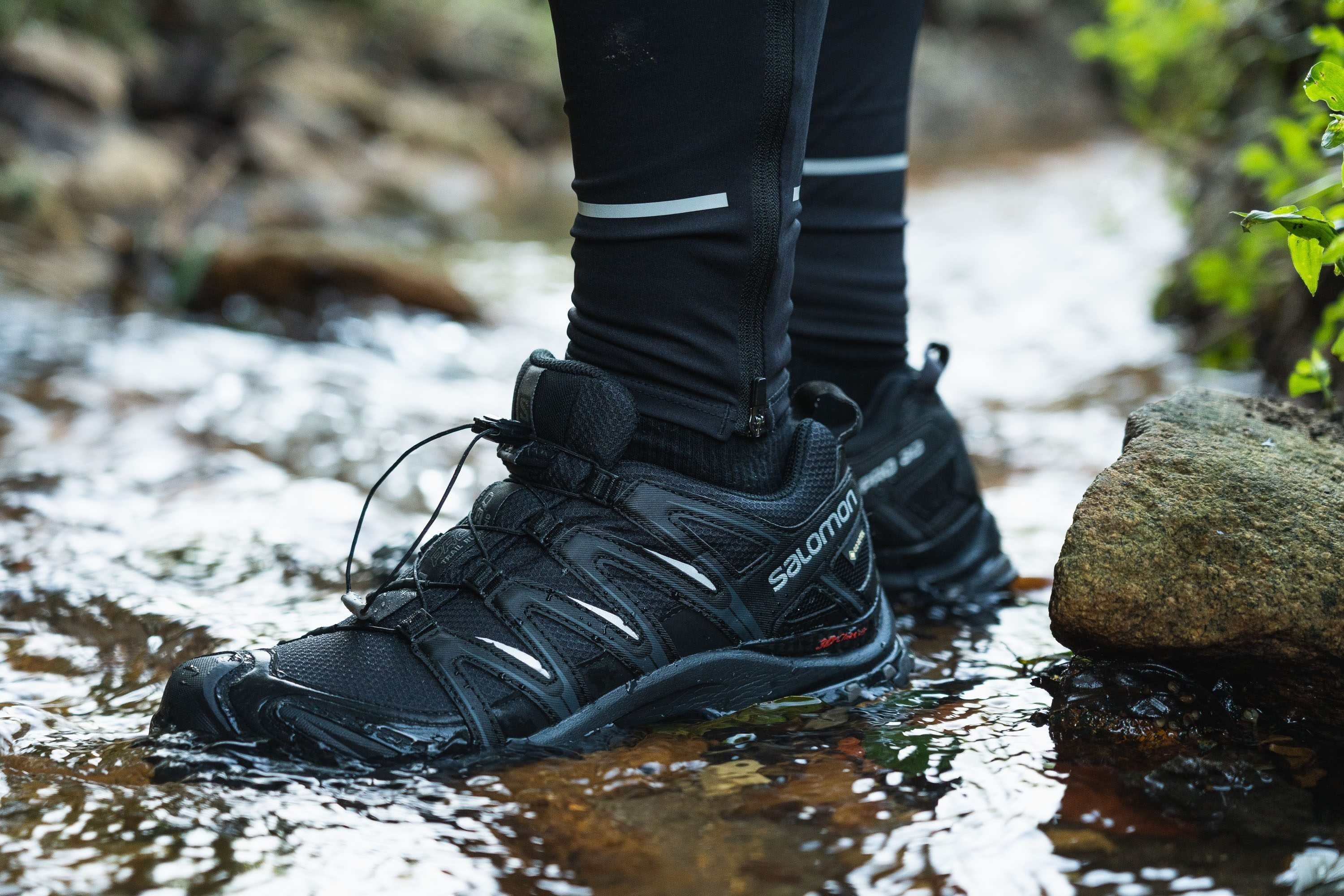
Ideally, we’d look for a superb lockdown, no extra bulk, and a platform that is not overly flexible. To be fair, most of the mud-specialised shoes deliver on all those fronts!
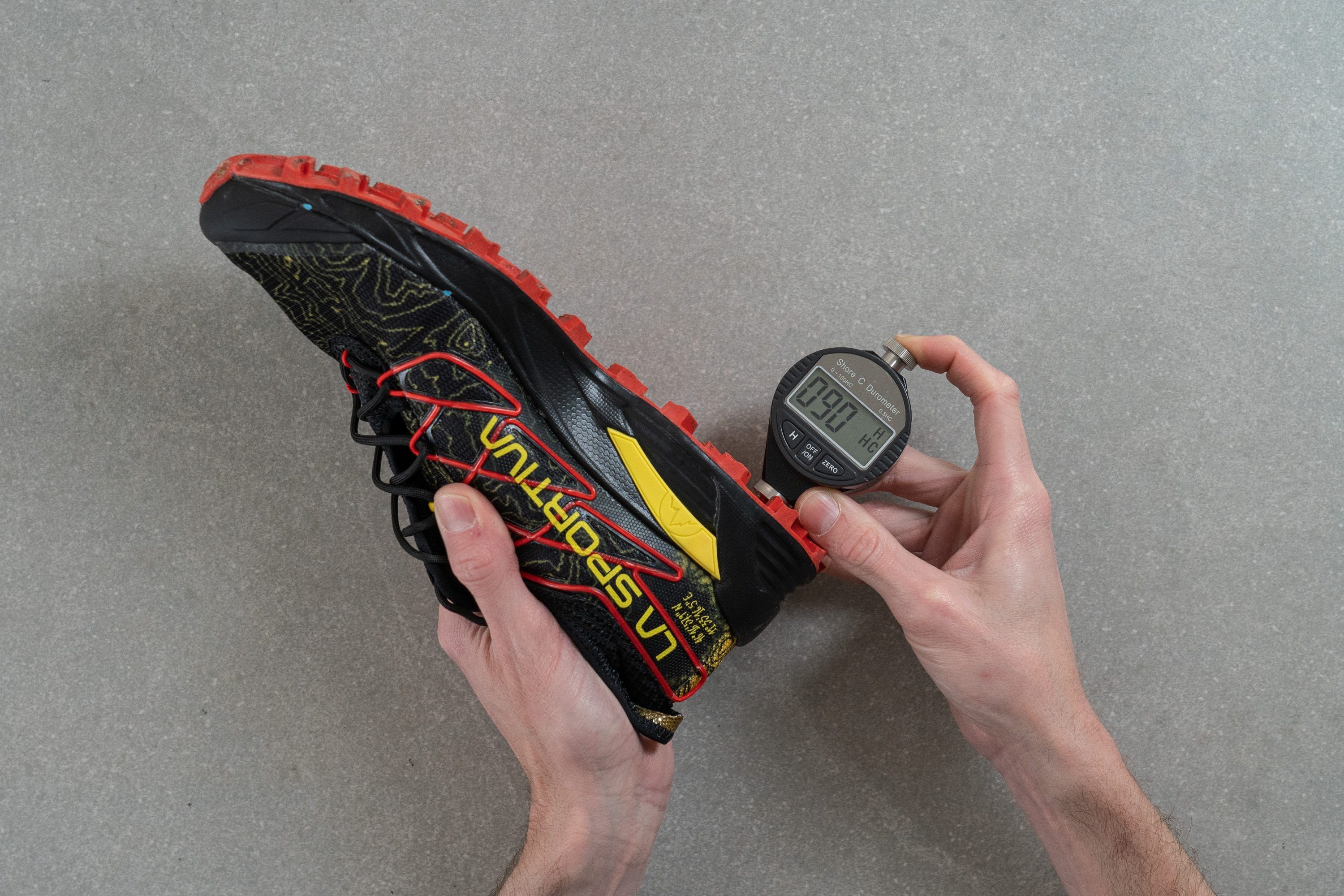
Next, we use a shore C durometer to measure the hardness of the outsole rubber. For mud, we’d look for somewhat softer rubber as it’s stickier. However, softer rubber is also less durable and more flexible.
Mixed terrain advice: mud and rocks
If the terrain is mixed, you want to check 2 things: 1) the durability of the outsole and b) whether the shoe has a rock plate.
The durability of the outsole is actually one of our lab tests. We press a dremel against the outsole, always at the same force, RPMs, and duration, and then look at the outcome.
The dent that the dremel has made is what we measure to assess durability. Deeper dents indicate less durable outsoles, just like shallower dents indicate more durable rubber.
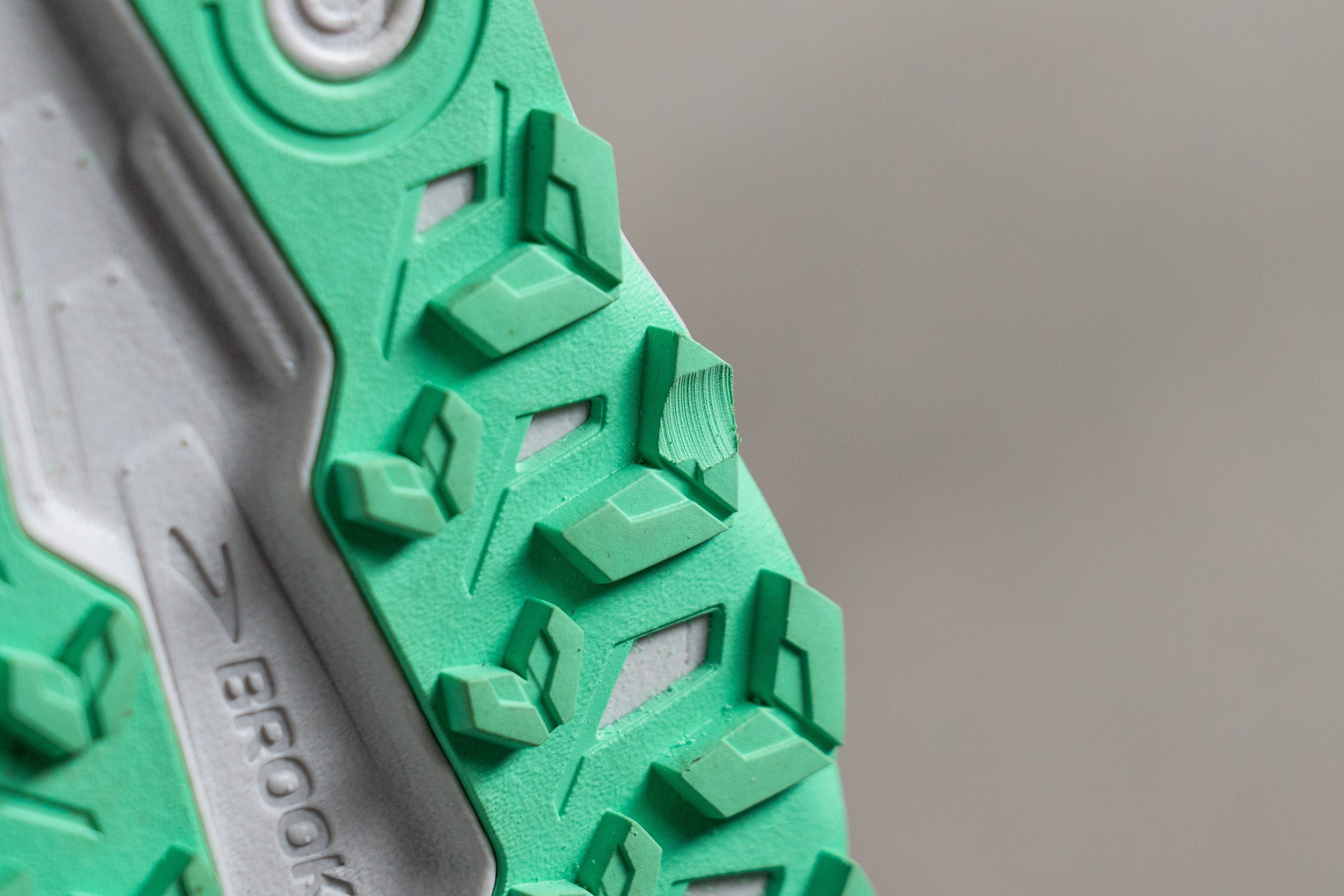
The rock plate is a great feature that adds extra protection to your feet when running on sharp rocks. It’s not a rare addition to the trail shoes. Some Altra trail shoes, for example, have a rock plate (or StoneGuard) shaped like an insole that can be added or not between the insole and the midsole.
Upper: breathable or waterproof?
This completely depends on the terrain and weather conditions.
|
Choose breathable mud shoes if: |
Choose waterproof mud shoes if: |
|
The water levels might be too high, and the water can get inside of your shoes. In this case, look for quick drainage and breathability. |
The water levels are low, so the water can’t get inside your shoes. Otherwise, it will stay there! |
|
You’re running in warm weather |
You’re running in cold weather |
|
You’re running long distances. Better to prioritise breathability |
You’re running shorter distances when it’s ok to have not that breathable shoe |
To test the breathability of the shoe, we pump the smoke into it and look at where the smoke comes out and at which pace. Based on this observation, we rate the breathability on a 1-5 scale, where 1 is the least breathable and 5 the most breathable.
We also look at the uppers under the microscope to understand better what’s going on.
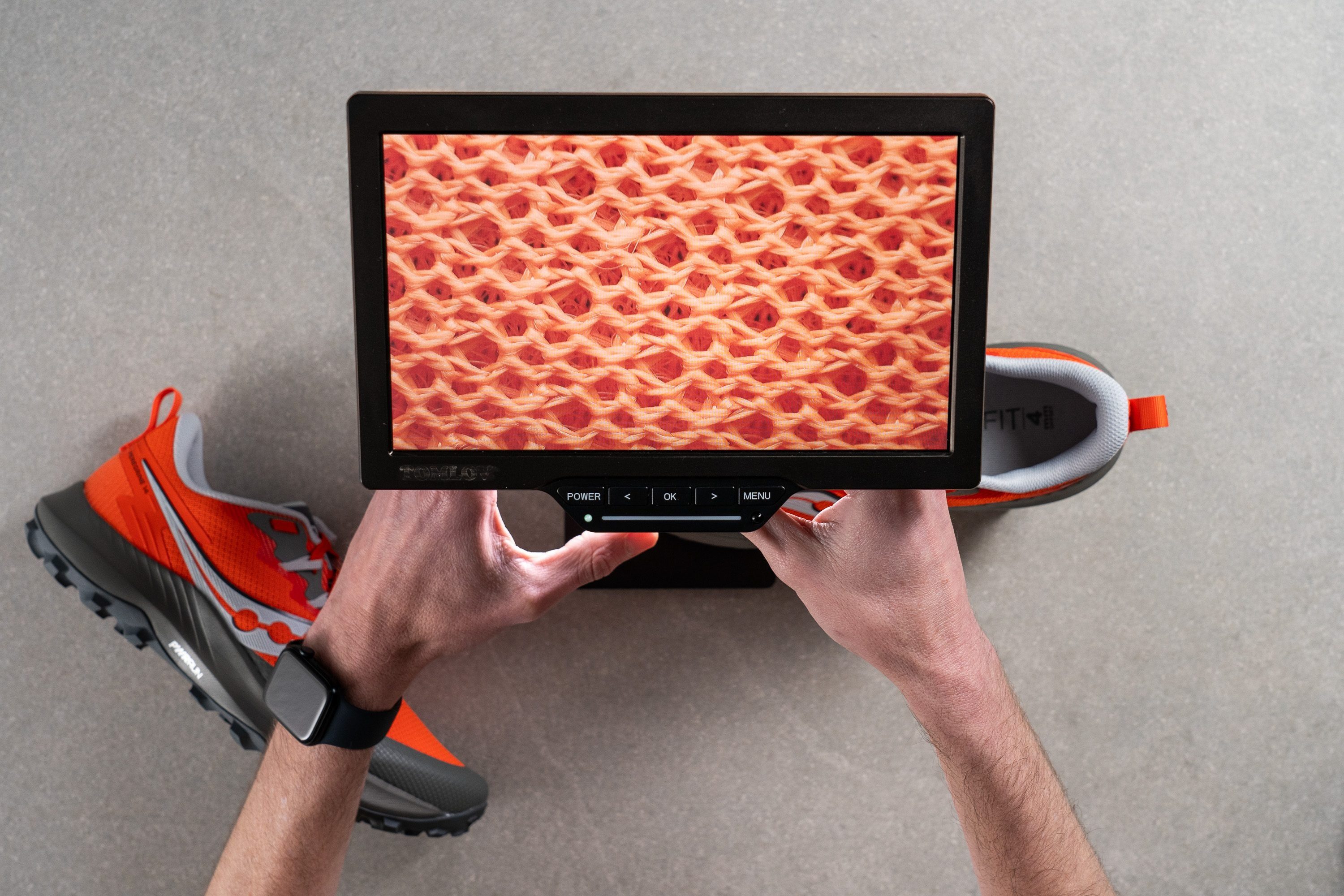
Breathable uppers usually have a more loose structure with noticeable ventilation holes, while waterproof uppers have a very tight structure with no vent holes.
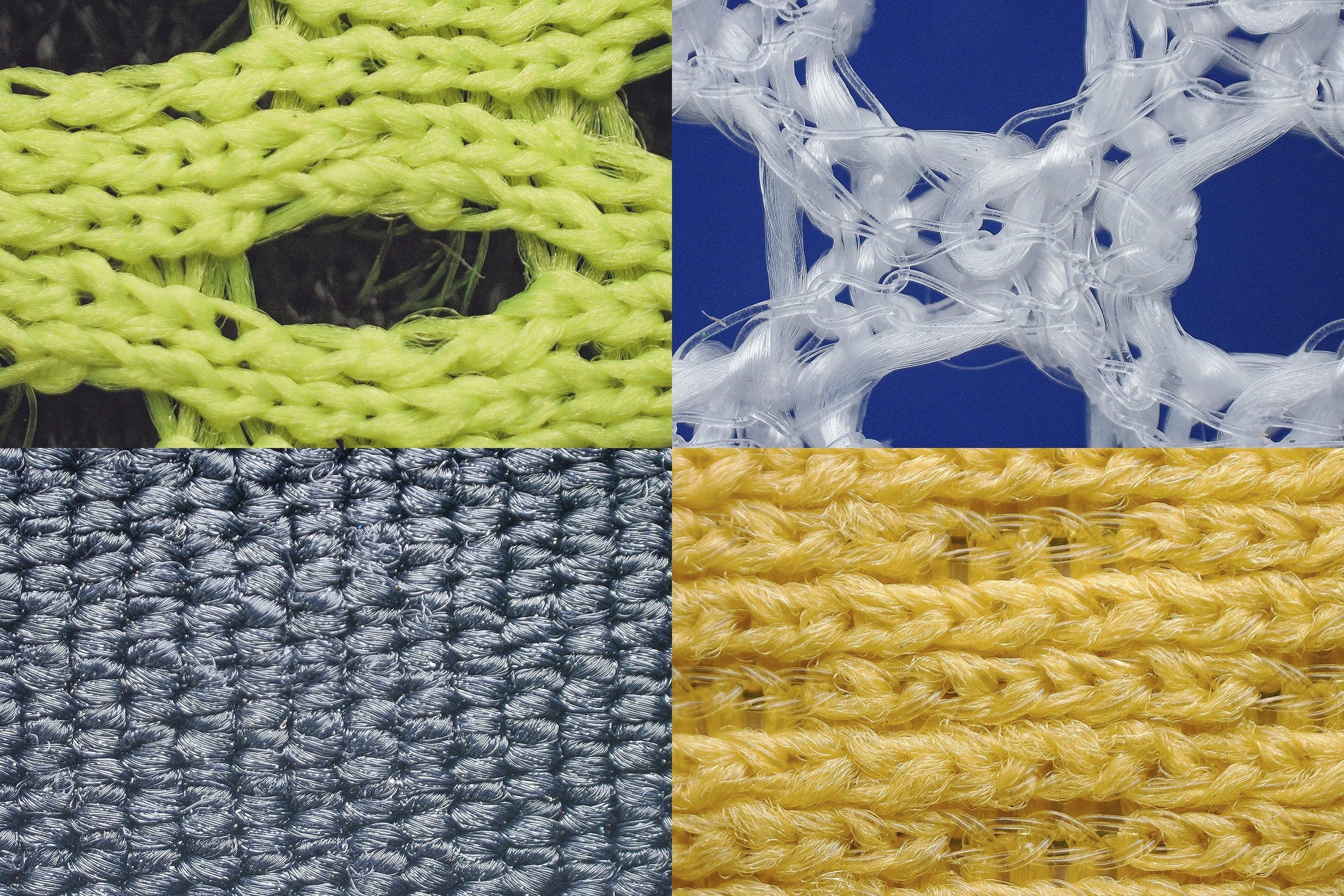
In the world of waterproof running shoes, Gore-Tex membrane is by far the most popular one. There are other waterproof membranes on the market as well, and brands always promote that feature, so you can’t miss it.
Little extra for mud running shoes
There are some details worth paying attention to: 1) waterproof gaiters, 2) gusseted tongues, and 3) heel collars.
First, if you intend to run in very wet weather with a lot of rain or running through the high wet grass, consider getting waterproof gaiters. They will keep the water on the outside which is great especially when it pours down your legs.
Second, shoes can have non-gusseted tongues, semi-gusseted tongues and gusseted tongues. It’s all about whether the tongue is attached to the both sides of the upper under the eyelets (gusseted), attached only to the 1 side (semi-gusseted), or free (non-gusseted).
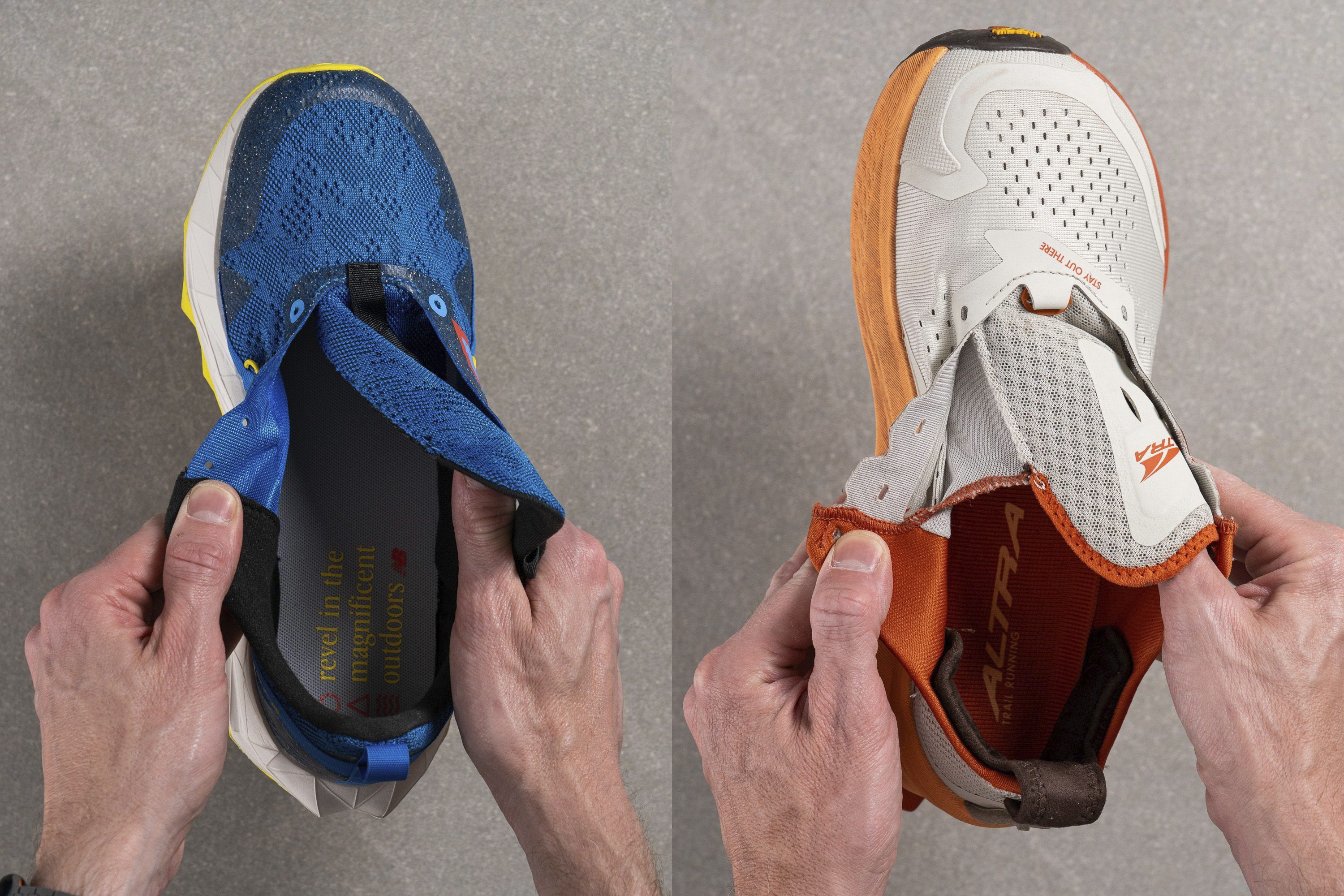
Gusseted tongues keep the debris out and help with waterproofness, of course. But, they also lower the breathability rating. It’s on you to decide what’s a priority.

Third, if you’re really bothered by the debris getting inside the shoes, you can look for mud shoes with a sock-like or gaiter-like heel collar. Sitting on the skin, such heel collar helps with anti-debris action.

